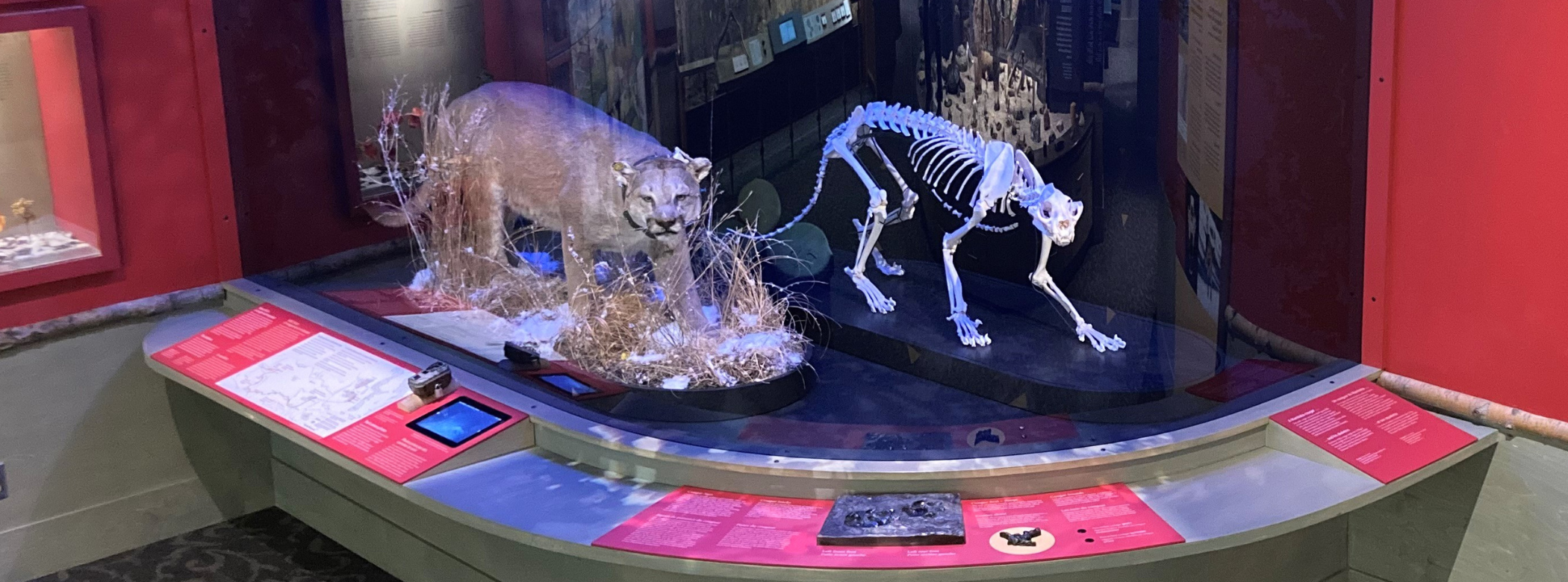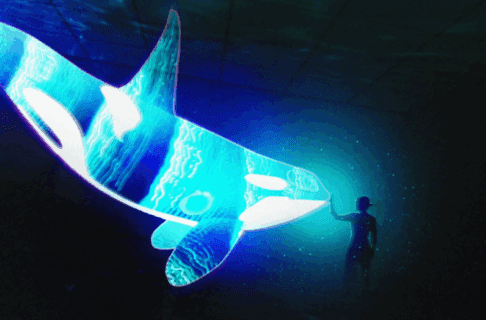Posted on: Friday January 10, 2025
Image, above: Visitors can experience a cougar and its skeleton up close and can experience the amazing journey of SK10 through maps and trail cam images. Explore the life of cougars through touchable paw prints, scat, and cougar screams and purrs. ©Manitoba Museum
The Manitoba Museum has a brand-new, permanent exhibit, and we invite visitors to pounce on the chance to see this exciting addition to our Museum Galleries. “The Cougar – Manitoba’s Big Cat” is an extraordinarily in-depth look at one of the most enigmatic creatures to roam our province.
“The Cougar – Manitoba’s Big Cat” is unique because it tells the story of one cougar, known as SK-10. In the spring of 2010, a cougar was born in Saskatchewan’s Cypress Hills. When he was just over one year old, he was given an ear tag, labeled SK-10, and fitted with a satellite tracking collar as part of a study by the University of Alberta. This study would reveal his remarkable 10-year journey through the prairies.
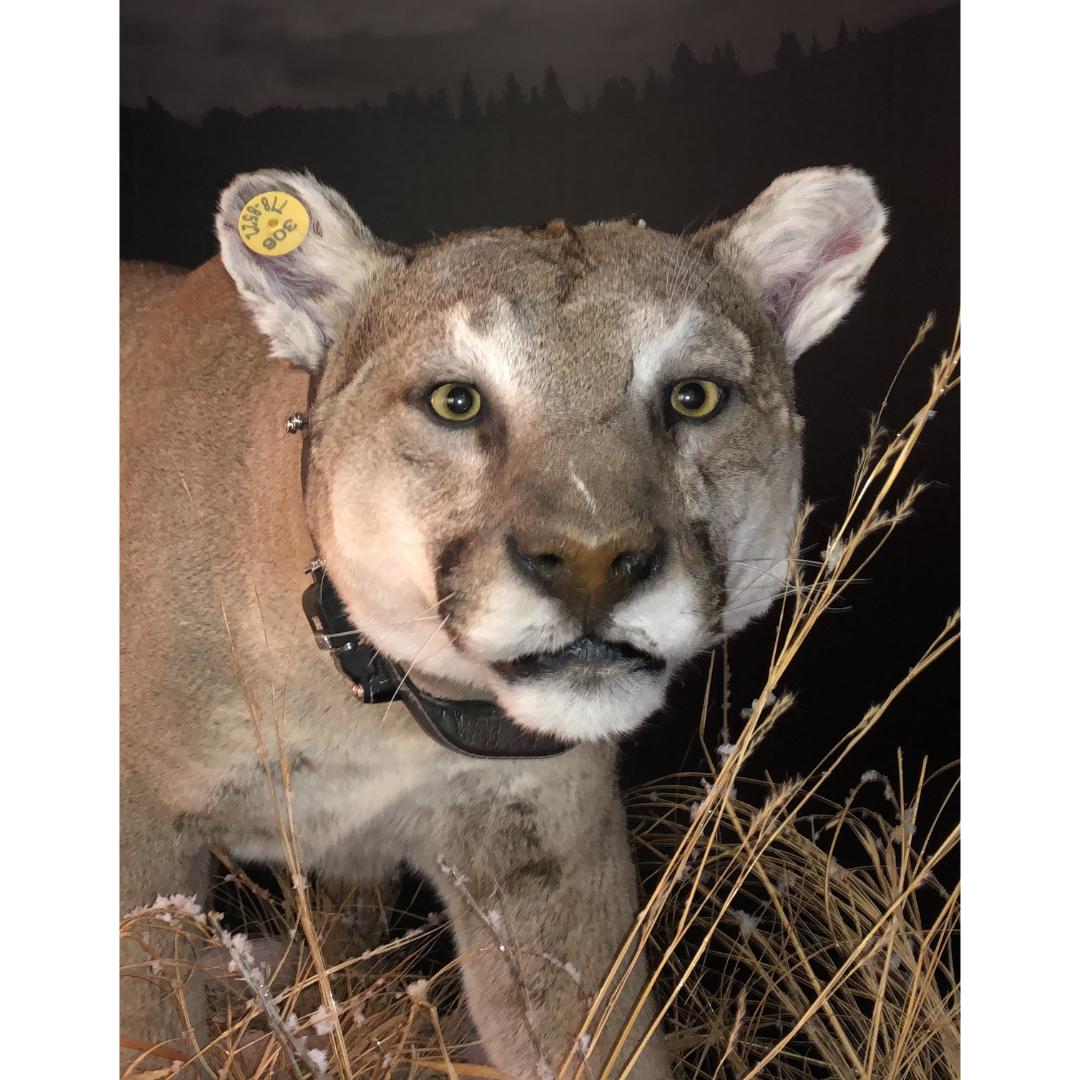
Have a staring competition with SK10 while experiencing the travels and lives of cougars in Manitoba. ©Manitoba Museum

Discover the inner workings of a cougar with a close-up look at its skeleton and understand how it is one of Manitoba’s most impressive predators. ©Manitoba Museum
SK-10 was destined to wander, but he traveled farther than any other cougar documented in the study. In just 100 days, he covered an astounding 750 kilometers, roaming through Montana before reaching Moose Mountain in Saskatchewan. His tracking collar malfunctioned that spring, but SK-10’s journey was far from over. From 2016 to 2018, he reappeared, caught on trail cameras in Riding Mountain National Park—a rare park visitor! He had traveled another 300 kilometers, reaching his final stop near Duck Mountain, where, in early February 2020, SK-10 was found accidentally caught in a legal coyote snare. This is where his journey to the Manitoba Museum began.
The Museum partners with Manitoba Wildlife officials and the Assiniboine Park Zoo to study and preserve any accidentally killed cougars. Placing the skin and skeleton in a museum gives the animal a second life of sorts, a lasting legacy by making it available for scientific study to better understand cougars in Manitoba and to tell their story to the public.
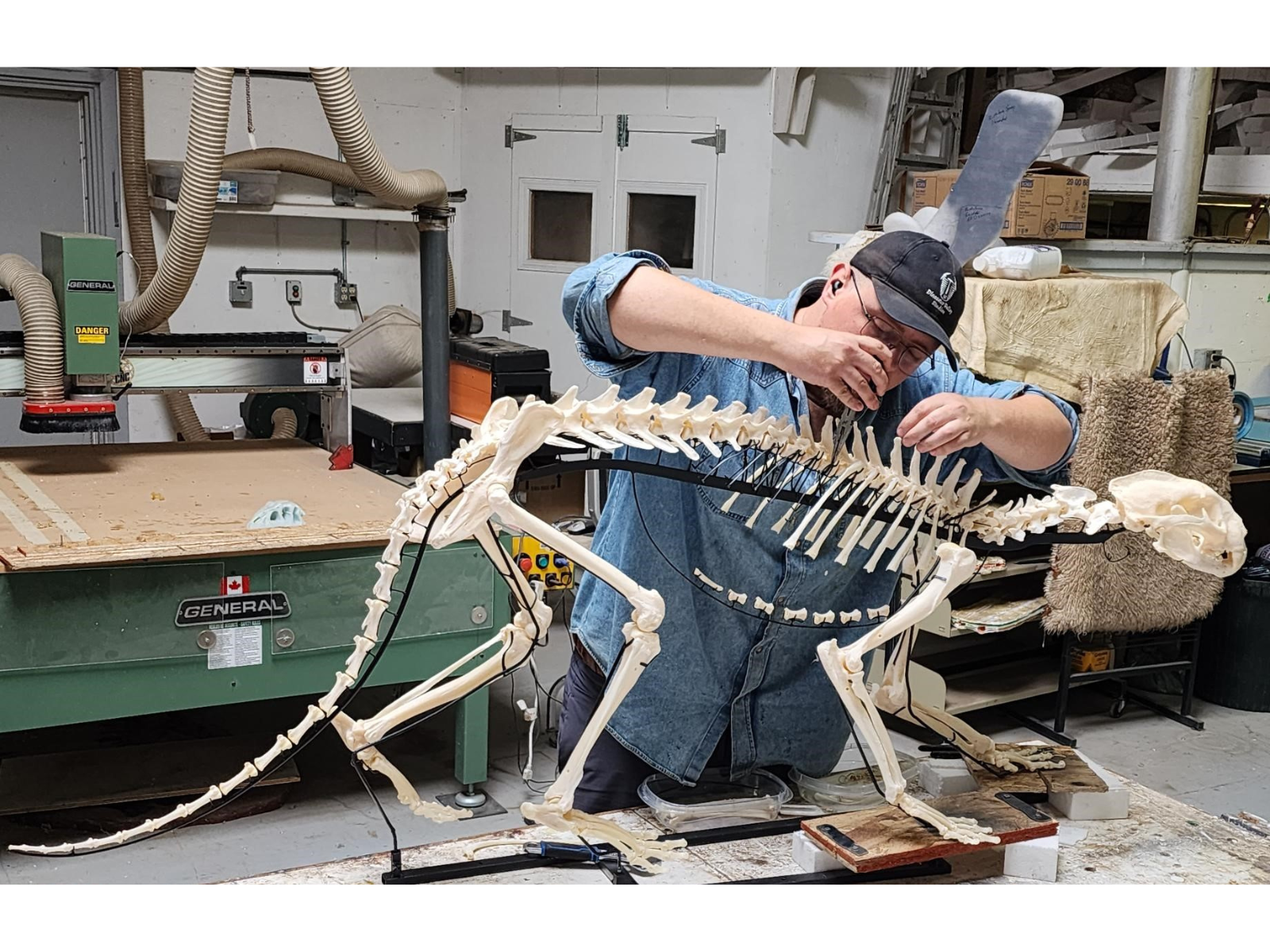
The skeleton of SK10 being mounted for exhibit. Each bone sits in a unique cradle that permits removal for later research. ©Manitoba Museum
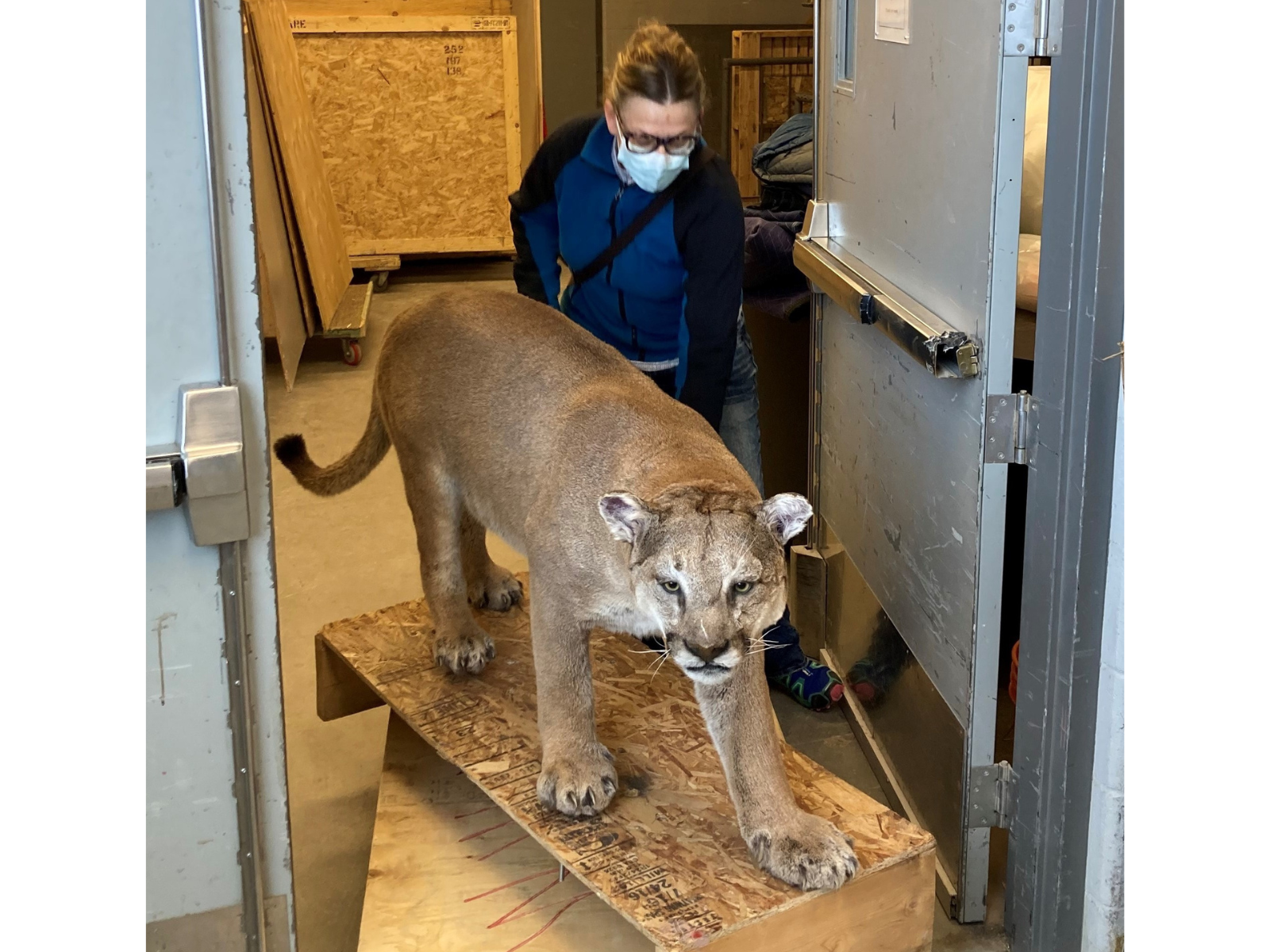
SK10 arrives at the Museum from the taxidermist in April 2022. There is still a lot of work to get the cougar and its skeleton ready for exhibit. ©Manitoba Museum
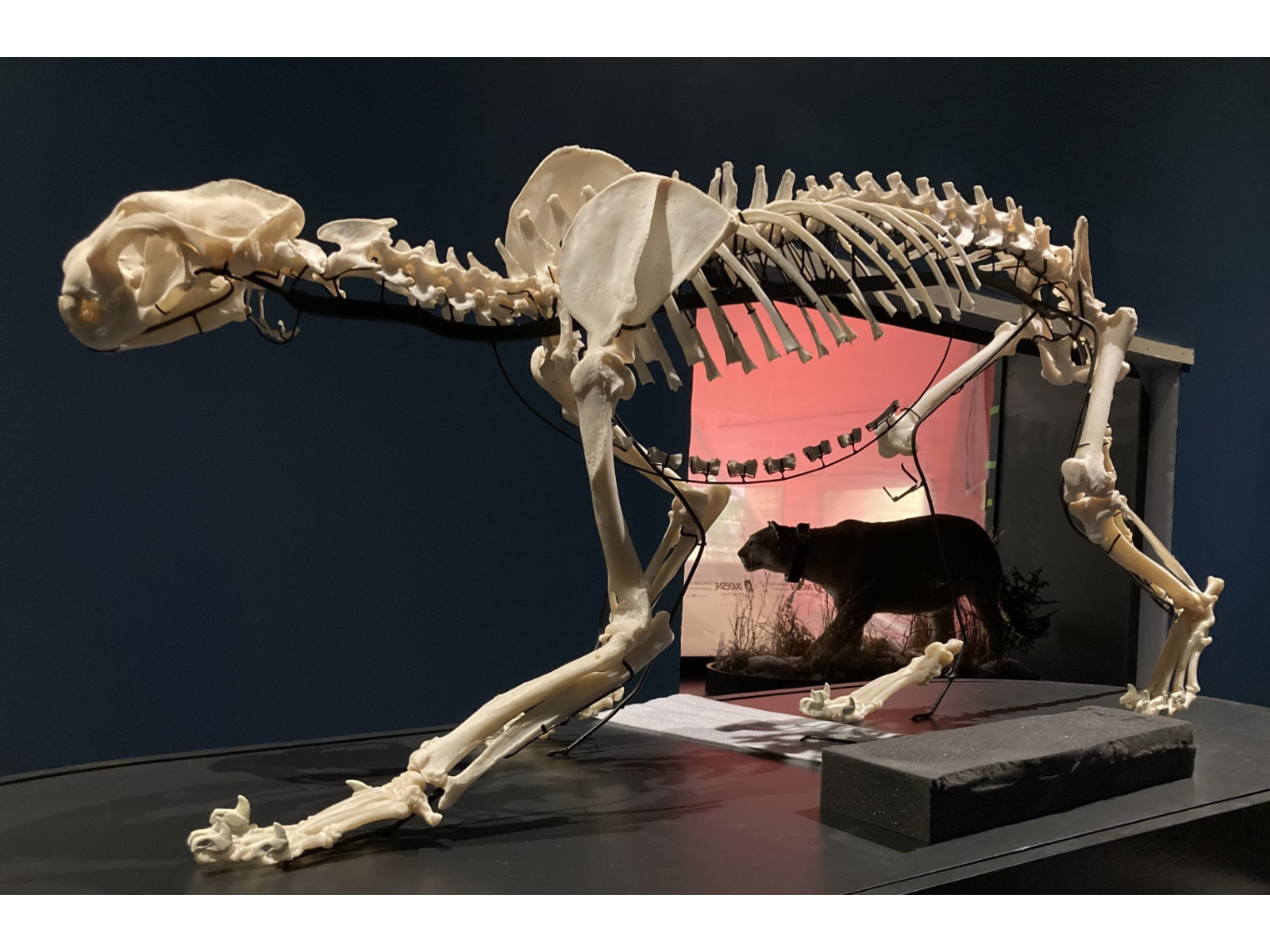
The taxidermy mount and skeleton of the cougar are placed in the exhibit through a sealed back door to prevent damage from pests and dirt. ©Manitoba Museum
Because SK-10’s story is so extraordinary, the Manitoba Museum was determined to bring it to visitors as a permanent feature of the Parklands Gallery. “The Cougar – Manitoba’s Big Cat” is an incredible and unique look at the inner-workings of this powerful predator, providing a glimpse of cougar life in Manitoba.




